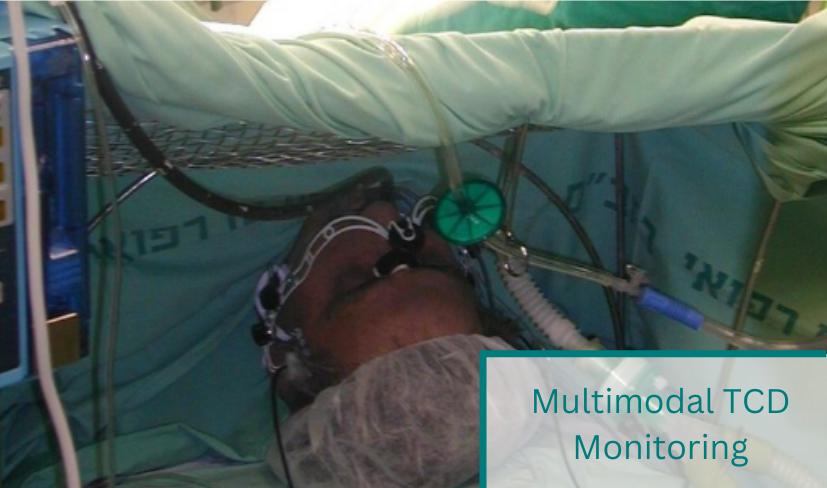
01 Juli 2025 Multimodal TCD Monitoring
TCD for Air Embolism Monitoring
In cardiac surgery, neurological injury—from delirium to catastrophic stroke—remains a feared complication. Single‑modality monitors like NIRS detect global oxygenation changes but can miss or misinterpret embolic events. A recent case report demonstrates how combining transcranial Doppler (TCD) with EEG, SSEP and NIRS enabled real‑time detection and resolution of a potentially devastating air embolism, averting neurological damage.
Why Multimodal Monitoring
Neurological risk in cardiac surgery: Adverse cerebral outcomes occur in 2–3% of isolated cases and up to 10% in aortic procedures, prolonging ICU stay and increasing mortality.
By integrating EEG, somatosensory evoked potentials (SSEP), brainstem auditory evoked potentials (BAEP), bilateral TCD, and frontal NIRS, the team gained a comprehensive, cross‑validated picture of cerebral function and blood flow.
Case Overview
This case was published in the Medical Research Archives under the title “Detection and Elimination of Potentially Pathologic Air Embolization in Cardiac Surgery with the Use of Multi-Modal Neuromonitoring: A Case Report”. It describes a 77-year-old male with NSTEMI, an ascending aortic aneurysm, and three-vessel coronary artery disease who underwent complex cardiac surgery using a hybrid approach: off-pump pericardiectomy followed by cardiopulmonary bypass for ascending aorta replacement and LIMA-to-LAD grafting.
Detection and Intervention
Shortly after placing the retrograde cardioplegia line, TCD detected bilateral high-intensity transient signals (HITS), signaling air emboli—changes not seen on EEG or NIRS. TEE confirmed air in the left heart, and a loose retrograde line was identified. Removing the line, placing the patient in Trendelenburg, and activating the aortic root vent instantly cleared the embolic signals on TCD. After repositioning the aortic clamp and switching to antegrade cardioplegia, TCD remained stable through bypass, and the patient recovered without neurological deficits.
Conclusion
This case underscores the critical role of transcranial Doppler in multimodal intraoperative neuromonitoring. By providing real-time sensitivity to both macro- and micro-emboli, TCD enabled immediate, targeted intervention—removing a loose retrograde line, Trendelenburg positioning, and active de-airing—which likely averted permanent neurological injury. Complementary NIRS and evoked-potential data helped contextualize the embolic signals, preventing unnecessary perfusion changes. The patient recovered fully, illustrating how early TCD-guided action can preserve brain function during high-risk cardiac surgery.
Chery, J., Rollins, Z., Adams, D., & Sehic, A. (2024). Detection and elimination of potentially pathologic air embolization in cardiac surgery with the use of multi-modal neuromonitoring: a case report. Medical Research Archives, 12(9). doi:10.18103/mra.v12i9.5844
